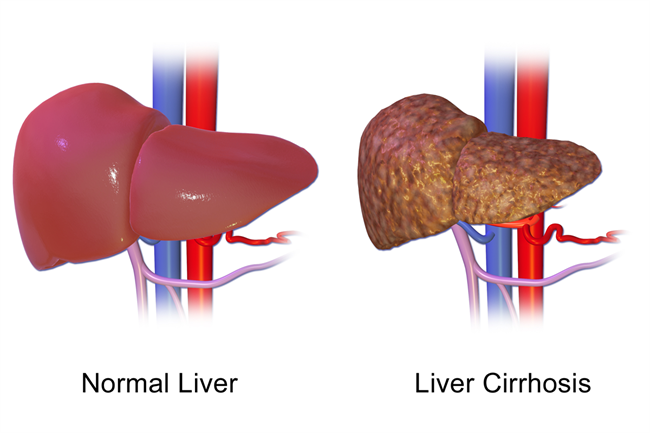"Liver Wellness in the Face of Viral Hepatitis"
The liver is one of the most vital organs in the human body, responsible for essential functions such as detoxification, bile production, and nutrient metabolism. Its proper functioning is crucial for overall health, but it is susceptible to various diseases, including viral hepatitis. Viral hepatitis, a group of infectious diseases caused by hepatitis viruses (A, B, C, D, and E), poses a significant threat to liver health worldwide. Despite its potentially severe consequences, individuals can take proactive steps to maintain liver health even when facing this challenge. This article explores the concept of viral hepatitis, its impact on liver health, and strategies for maintaining liver wellness in its presence.
Understanding Viral Hepatitis
Viral hepatitis refers to inflammation of the liver caused by specific viruses. The most common types—hepatitis A, B, and C—differ in modes of transmission, severity, and long-term effects.
Hepatitis A (HAV): Spread primarily through contaminated food and water, hepatitis A is typically acute and self-limiting. Although it rarely causes long-term liver damage, severe cases can lead to fulminant hepatitis, a life-threatening condition.
Hepatitis B (HBV): Transmitted through blood, semen, or other bodily fluids, hepatitis B can lead to chronic infection in some individuals. Chronic HBV significantly increases the risk of liver cirrhosis and liver cancer.
Hepatitis C (HCV): Hepatitis C spreads through blood-to-blood contact, often via shared needles or unsterilized medical equipment. It is a leading cause of chronic liver disease and a major contributor to liver transplants.
Hepatitis D (HDV) and E (HEV): These less common types of hepatitis also affect liver health. HDV occurs only in conjunction with HBV, while HEV, often waterborne, is prevalent in developing countries.
Impact of Viral Hepatitis on Liver Health
Viral hepatitis can lead to both acute and chronic liver conditions. Acute hepatitis often manifests as jaundice, fatigue, nausea, and abdominal pain. In chronic cases, the prolonged inflammation caused by HBV or HCV can result in progressive scarring of the liver (fibrosis), eventually leading to cirrhosis or liver cancer. Advanced liver disease can impair the liver's ability to filter toxins, regulate blood clotting, and process nutrients, resulting in life-threatening complications such as hepatic encephalopathy or liver failure.
The global burden of viral hepatitis is immense, with more than 300 million people living with chronic HBV or HCV. Many cases go undiagnosed due to the asymptomatic nature of early stages, highlighting the importance of awareness and regular screening.
Strategies for Liver Wellness
Maintaining liver health in the face of viral hepatitis involves a multifaceted approach, encompassing medical management, lifestyle changes, and preventive measures. Below are key strategies for promoting liver wellness:
Seek Timely Diagnosis and Treatment Early diagnosis is crucial for effective management. Blood tests can identify viral hepatitis markers, liver enzymes, and overall liver function. Once diagnosed, treatment options depend on the type of hepatitis:
Hepatitis A: Supportive care is sufficient, as the infection usually resolves on its own.
Hepatitis B: Antiviral medications, such as tenofovir and entecavir, help suppress the virus and prevent liver damage.
Hepatitis C: Direct-acting antiviral (DAA) therapies can cure most cases of HCV, significantly reducing the risk of liver complications.
Regular follow-ups with a healthcare provider ensure that any signs of disease progression are detected and managed promptly.
Adopt a Liver-Friendly Diet Nutrition plays a crucial role in liver health. A balanced, liver-friendly diet includes:
Fruits and Vegetables: Rich in antioxidants and fiber, they help reduce liver inflammation and oxidative stress.
Whole Grains: Foods like oats, brown rice, and quinoa support stable blood sugar levels and reduce liver fat.
Lean Proteins: Fish, chicken, and plant-based proteins are gentle on the liver while providing essential nutrients.
Healthy Fats: Omega-3 fatty acids, found in fatty fish and flaxseeds, have anti-inflammatory properties.
Avoid processed foods, excessive sugar, and trans fats, as they contribute to liver fat accumulation and inflammation.
Limit Alcohol and Toxins Alcohol consumption exacerbates liver damage, especially in individuals with viral hepatitis. Complete abstinence is recommended for those with chronic hepatitis. Additionally, avoid unnecessary medications and exposure to environmental toxins, as the liver bears the burden of detoxification.
Stay Vaccinated Vaccines are available for hepatitis A and B, providing effective protection against these infections. Individuals with chronic liver disease should ensure they are vaccinated to prevent further liver complications. For those at risk of HEV, improved sanitation and hygiene practices are essential.
Exercise Regularly Physical activity enhances overall health and reduces liver fat. Aim for at least 150 minutes of moderate aerobic exercise per week, such as walking, cycling, or swimming. Exercise also improves insulin sensitivity, which benefits liver metabolism.
Manage Stress Chronic stress can worsen liver inflammation and impair immune function. Practices like meditation, yoga, and deep breathing promote mental and emotional well-being, supporting overall liver health.
Monitor Liver Function Regularly Individuals with viral hepatitis should undergo regular liver function tests and imaging studies to monitor disease progression. Early detection of complications like fibrosis or cirrhosis allows for timely intervention.
Prevention of Viral Hepatitis
Preventing hepatitis infections is the cornerstone of liver wellness. Key preventive measures include:
Practicing Safe Hygiene: Wash hands thoroughly, especially before eating and after using the restroom, to prevent HAV and HEV.
Safe Sexual Practices: Use condoms and limit the number of sexual partners to reduce the risk of HBV and HCV.
Avoid Sharing Needles: Injecting drug use is a major route of HCV transmission; needle exchange programs and addiction treatment are critical.
Ensuring Safe Blood Transfusions: Screened blood products eliminate the risk of HBV and HCV transmission during transfusions.
Travel Precautions: In areas with poor sanitation, avoid drinking untreated water or consuming raw or undercooked foods.
Hope and Advances in Treatment
Advances in medical science have significantly improved the outlook for individuals with viral hepatitis. The availability of effective vaccines, antiviral drugs, and curative therapies for HCV has transformed the management of these infections. Furthermore, global initiatives like the World Health Organization's (WHO) goal to eliminate viral hepatitis as a public health threat by 2030 underscore the collective effort to combat this disease.
Conclusion
Liver wellness in the face of viral hepatitis is achievable through a combination of medical intervention, lifestyle choices, and preventive strategies. By staying informed, seeking timely treatment, and adopting healthy habits, individuals can mitigate the impact of viral hepatitis on their liver health. With continued advancements in healthcare and increased awareness, the burden of viral hepatitis can be reduced, paving the way for a healthier future for millions worldwide





























0 comments: